Da bin ich wieder. Hier war ich schon mal, Neujahr 2013, und weil Neujahr in Japan wie Weihnachten bei uns ist, also wie Weihnachten im Kaufhaus am 24.12., war der Schrein nicht zu sehen, aber dafür viele Menschen (http://fraumb-far-far-away.blogspot.jp/2013/01/der-schwimmende-schrein-miyajima.html).
Diesmal ist normales Wochenende und ich dachte, ich hab die Insel für mich allein. Also, nur ich und die Rehe. Haben wahrscheinlich all die anderen Touristen auch gedacht. Waren viele diesmal, vor allem viele aus dem Ausland. Und auf jeden Touristen kamen gefühlt vier Schulkinder. Also, war fast wie Neujahr. Aber doch alles ganz entspannt. Und ich hatte diesmal den Eindruck, dass die Kinder respektvoller mit den Tieren umgegangen sind. Bei meinem ersten Besuch fand ich es sehr verstörend, dass vor allem junge Kinder nach den Tieren geschlagen haben, oder versuchten, sie am Schwanz zu ziehen. Wahrscheinlich litten sie unter einer, durch zu viele Süßigkeiten ausgelösten Überzuckerung. Oder sie benehmen sich unter ihresgleichen zivilisierter als bei den Eltern. Heute war alles gut für die Rehe, sie wurden gestreichelt, gekuschelt und fotografiert. Auch von mir, also letzteres.
Als ich ankomme, ist Ebbe, darum kann man fast trockenen Fußes bis zum Tori laufen und es anfassen. Was müssen das für gigantische Bäume gewesen sein, die nun die Unsterblichkeit und, als häufigstes Fotomotiv Japans, weltweite Berühmtheit erlangt haben.
Auf meinem Streifzug über die Insel finde ich das Miyajima Geschichts- und Folkloremuseum. Eingerichtet in einem großen traditionellen Wohn- und Werkstattbaus, zeigt es viele Exponate, die unmittelbar mit dem Schrein zusammen hängen, aber auch traditionelle Holzbearbeitung, das Herstellen von hölzerner Schüsseln, Schatullen und der großen Reislöffel - der Löffel, ein Souvenir aus Hiroshima, ist dann also eher ein Souvenir von der Insel Miyajima. Fotografieren darf man nicht, darum gibt's für meine geneigte Leserschaft hier nix zu gucken.
Neben der zweistöckigen Pagode, die ich beim letzten Mal gesehen habe, gibt es noch die große, fünfstöckige. Die werde ich mir nun mal aus der Nähe betrachten. Ein kurzer Anstieg und ich stehe vor einer riesigen Halle, dem Toyokuni Schrein, der eigentlich von allen Senjō-Kaku genannt wird. Turm der tausend Tatamis, als Anspielung auf die enorme Größe der Halle. Und ja, sie ist groß, selbst für Raum-verwöhnte Berliner wie mich. Und eingedenk der Tatsache, dass der Bau 1587 begann, muss sie den Menschen gigantisch erschienen sein. Toyotomi Hideyoshi, Feldherr und Politiker befahl den Bau der Halle, um hier monatlich buddhistische Sutren singen zu lassen, damit sollten die Seelen der Kriegstoten getröstet werden. Eine schöne Geste vom Feldherren. Auch gut, Krieg vermeiden, dann muss auch kein Kriegsgefallener getröstet werden. Als Toyotomi zwölf Jahre später starb, war die Halle noch nicht ganz fertig, es fehlten die Wände und das Dach. Heute ist alles schick, Dach, Stützbalken, Pfeiler, Wände, Decke, Boden, gehalten in Naturfarben und mit Tatamimatten ausgelegt, man kann für einen geringen Obolus die Halle und die umlaufende Veranda betreten, besetzen und beliegen. Am Ende der Halle scheint dann leuchtendes orangerot durch die graubraunen Pfeiler - die große Pagode, fünfstöckig und mit der Besonderheit, dass der mittlere Stützpfeiler nur bis zum ersten Stockwerk reicht. Fünf dieser Art soll es in Japan geben. Aber das weiß ich nur aus zweiter Hand. Ich bin noch nie in einer Pagode gewesen, ich weiß nicht mal, ob die überhaupt jemals für Besucher zugänglich sind. Und wenn ich mir was wünschen darf, dann würde ich gern mal eine Pagode von innen sehen. Davor steht eine Palme, die der Pagode sehr zugeneigt ist, so sehr, dass sie gestützt werden muss.
Here I go again. I've been here before, at New Year's Eve 2013, and because New Year in Japan is like Christmas at home, like Christmas in the mall at December 24th, the shrine was badly to be seen because of the mass of people (http://fraumb-far-far-away.blogspot.jp/2013/01/der-schwimmende-schrein-miyajima.html).
This time it's an ordinary weekend and I had hoped, I'll have the shrine all for myself, only me and the deer. Could be, all the other tourist have thought the same. They were many this time and many from abroad and for every tourist there perceived four school kids. That means, it was like New Year's Eve. But it was very relaxed. And I had the impression, that the kids were more respectful with the deer. The first time it was disturbing, that especially young kids try to hit the deer or pull their tail. Maybe they were suffering from a post festivity hyperglycaemia caused by too much candy. Or they act more civilised among themselves than with their parents. But today was a good day for the deer, they were petted, cuddled and photographed. Even by me, the last thing.
When I arrive is low tide, that means one can walk with nearly dry foot up to the Tori and touch it. What giant trees must have been that once, which now reached immortality and, as the most frequently subject of Japan, worldwide fame.
On my stroll across the island I meet the Miyajima History and Folklore Museum. Established in a huge traditional living and working house, it shows many items connected with the shrine, but also traditional wood craft like making bowls, boxes and big rice spoons - The spoon, a souvenir from Hiroshima is indeed a souvenir from Miyajima. Taking pictures was prohibited and that's why there is nothing to be seen here for my sympathetic readership.
Beneath the two story pagoda, which I saw last time, is there is a five story one too. Let's get more near to it. A short way hill up and I'm standing in front of a wide hall, the Toyokuni shrine, commonly called Senjō-Kaku, the tower of thousand tatami. An allusion of the enormous size of the hall. And yes, it's huge, even for space-spoiled people from Berlin like me. And bearing in mind that it was 1587 when they start to build it, it must have been even more gigantic to the people. Toyotomi Hideyoshi, politician and commander demanded to build the hall as a place to sing buddhistic sutra each month to comfort the souls of those who died in war. That's nice of the commander. More nice would be to make no war, so no war dead have to be comforted. When twelve years later Toyotomi died, the hall was not really completed, the ceiling and walls were missing. Today everything is fine, roof, pillars, timber, walls, ceiling, floor, appears in natural colours and with tatami on the floor, one can, for a small obolus enter the hall and the surrounding veranda, one can walk there, sit there, lay down there. At the end of the hall through the grey brown pillars shines a vibrant red orange - the five story pagoda. And there is something special about it, the abutment inside only reaches to the first floor. There shall be five pagodas like that in Japan. But that's only second hand knowledge, I've never been inside a pagoda, and I don't know if they ever allow visitors. If I could make a wish, I would like to see a pagoda from the inside. In front of it stands a palm tree and it's very affectionate to the pagoda. So affectionate, that's it needs abutments too.
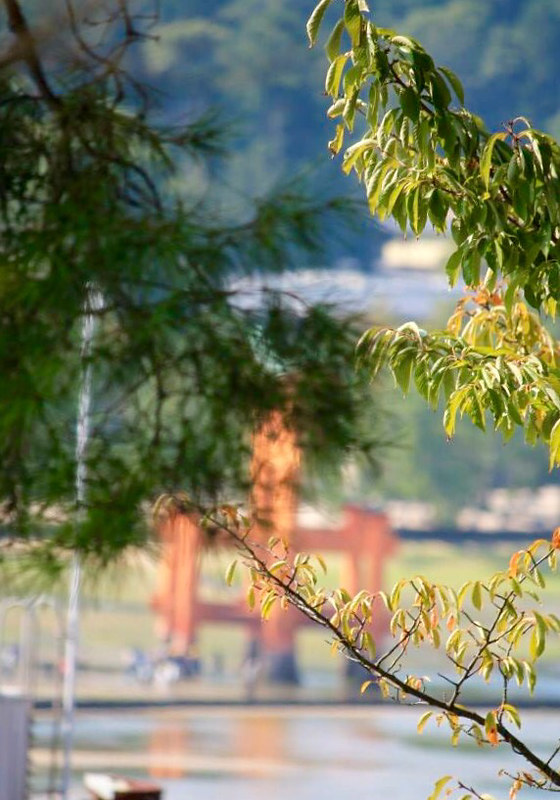
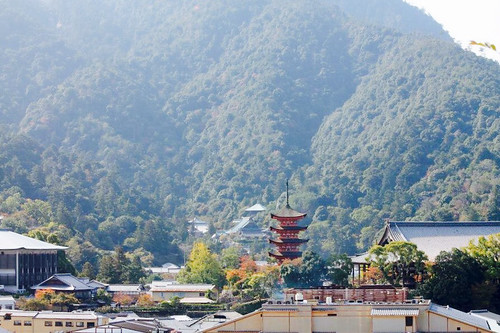
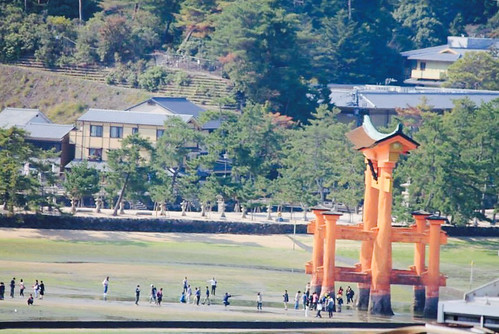

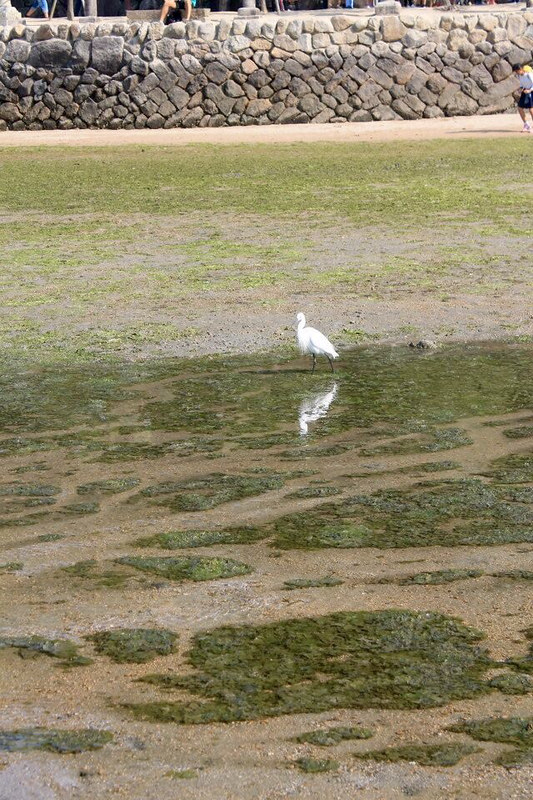
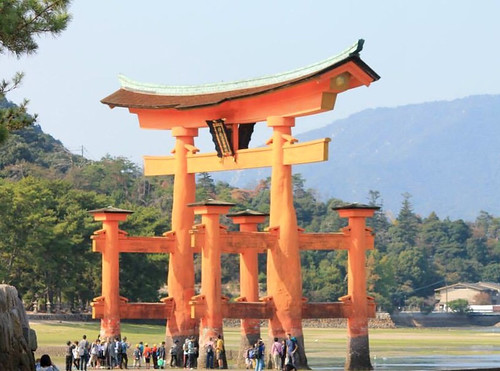
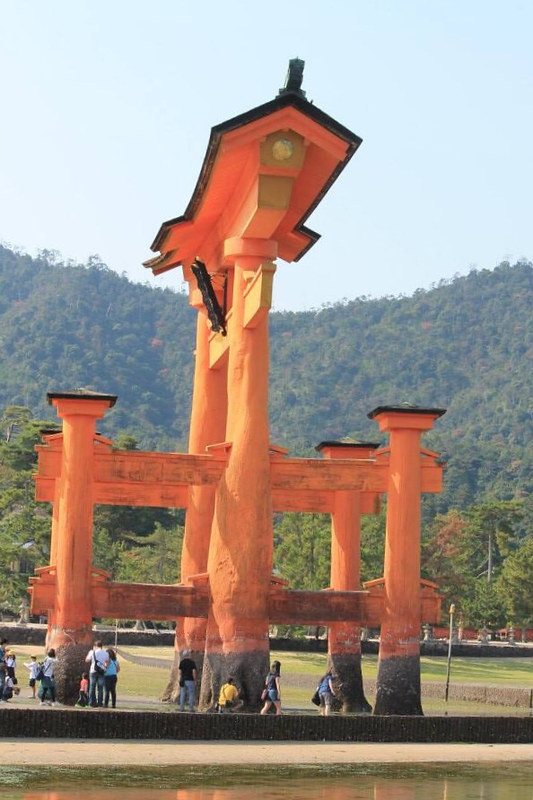
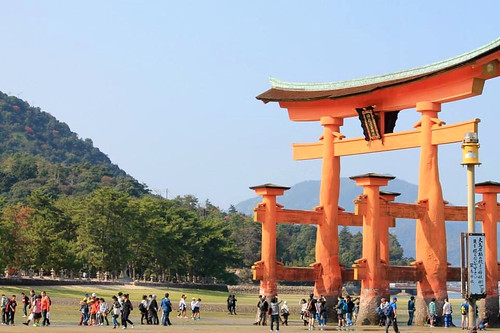
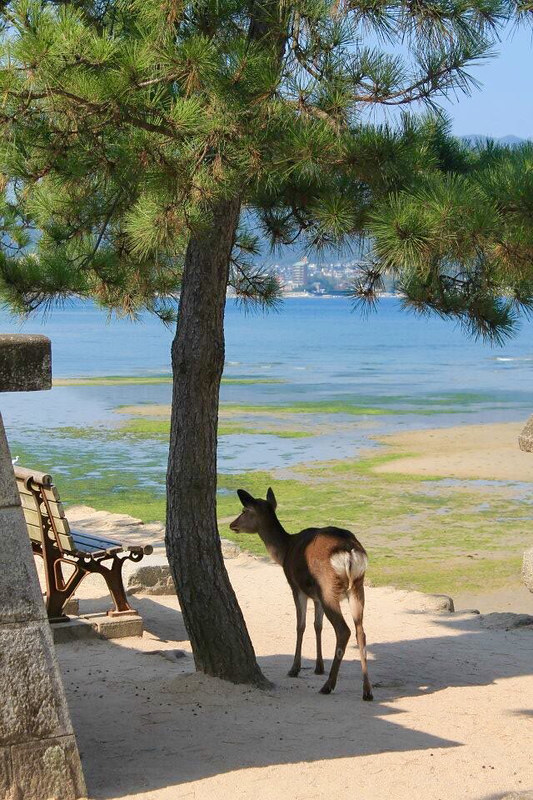


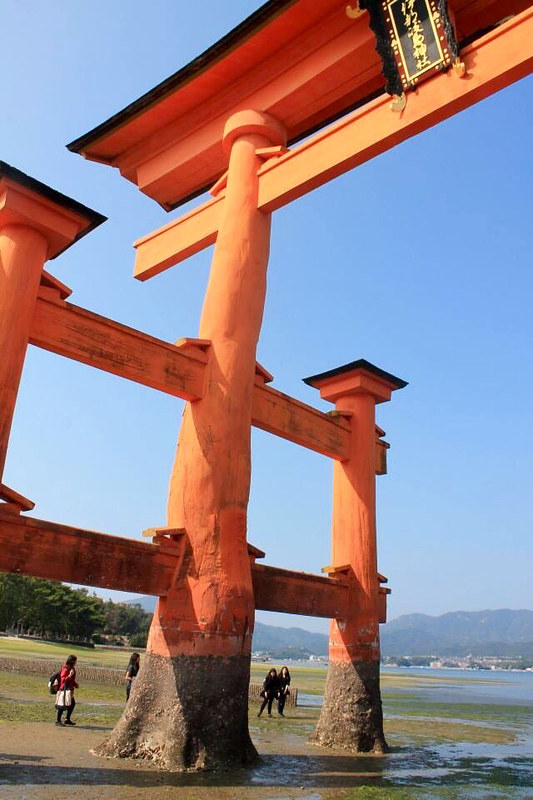
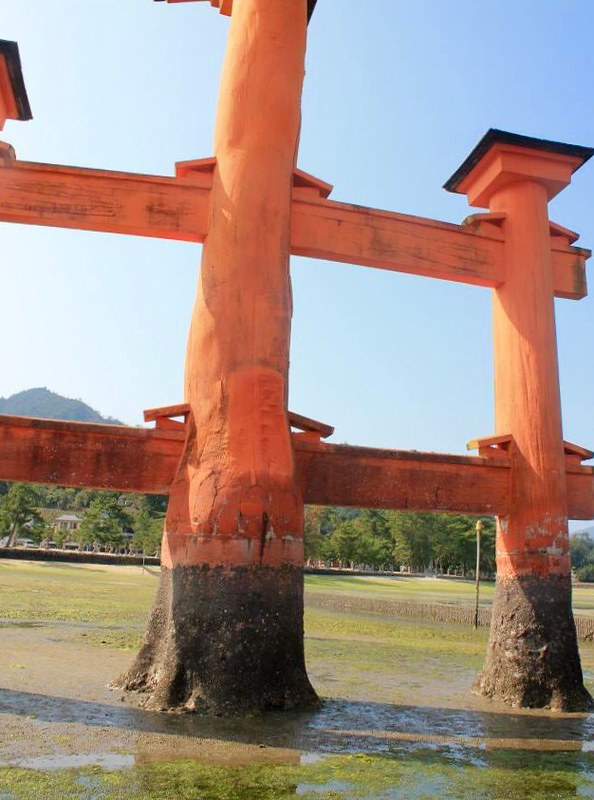
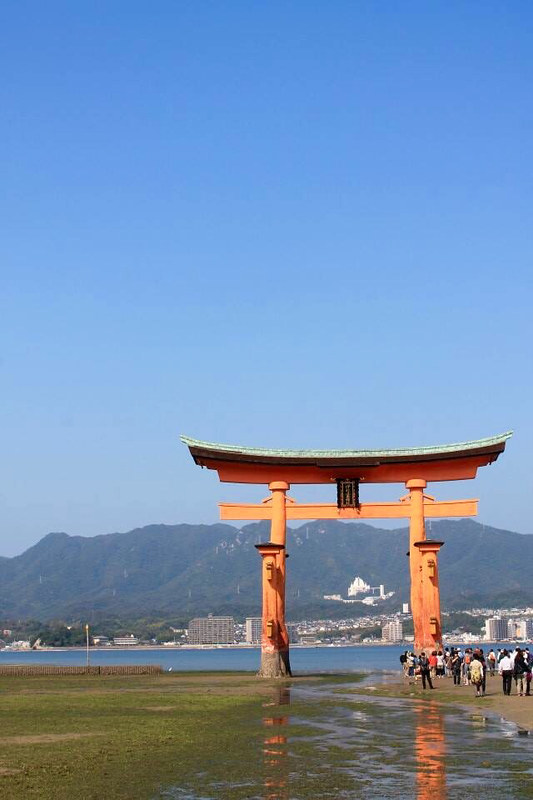

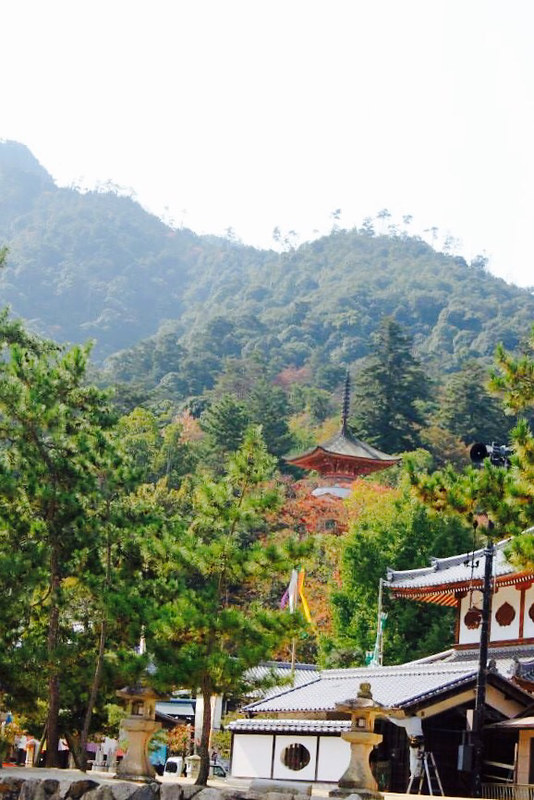
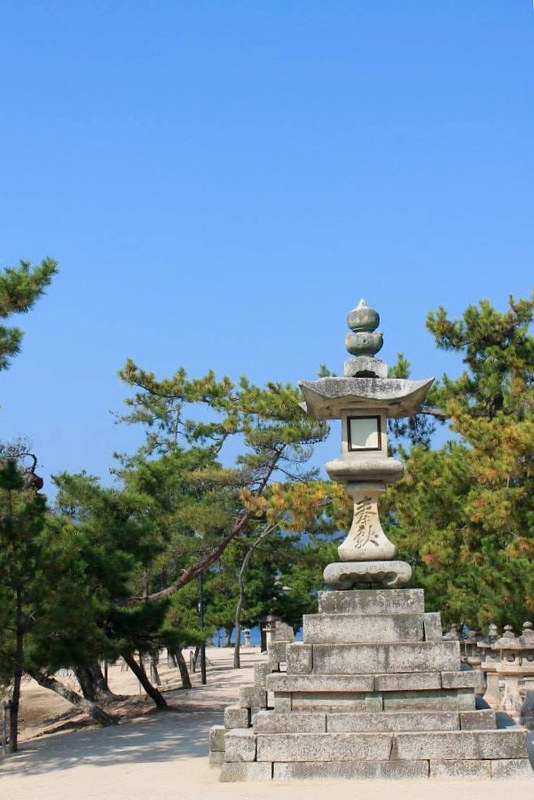
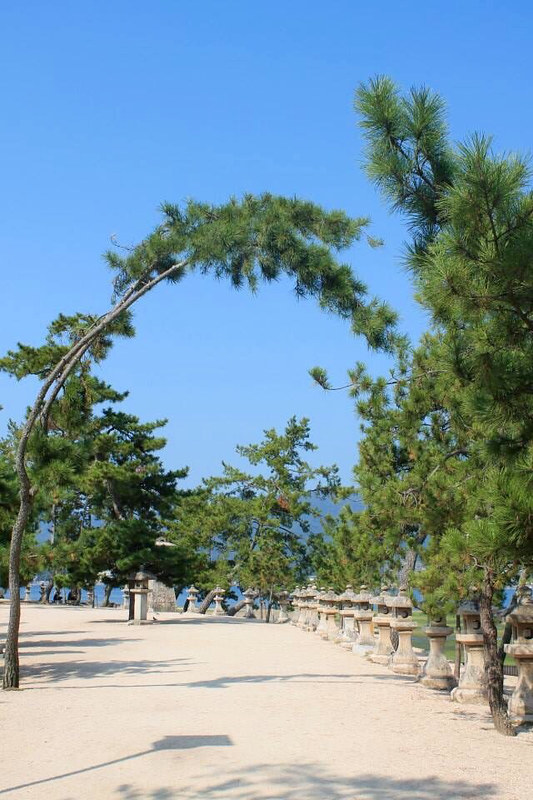
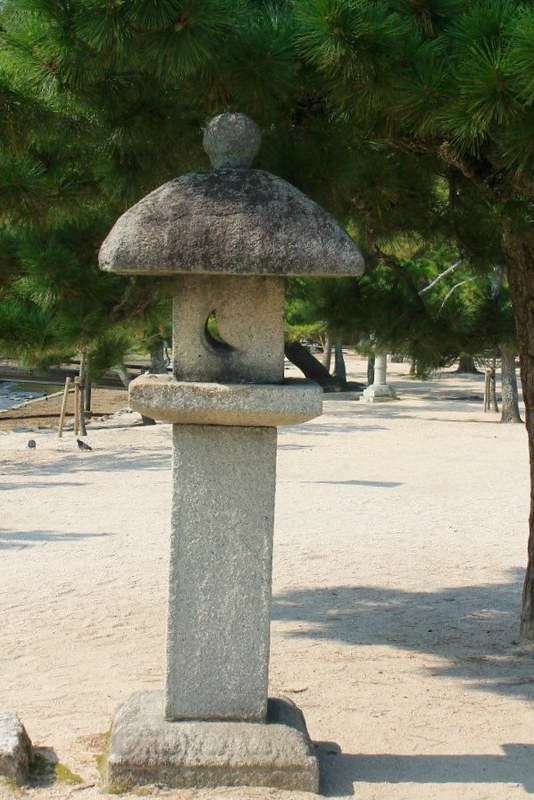
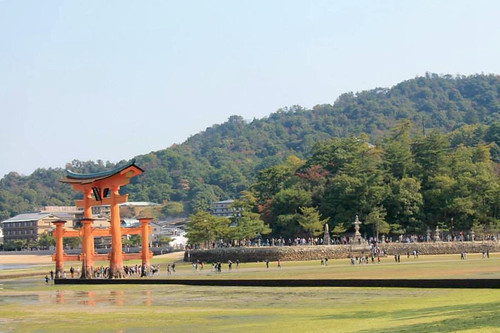
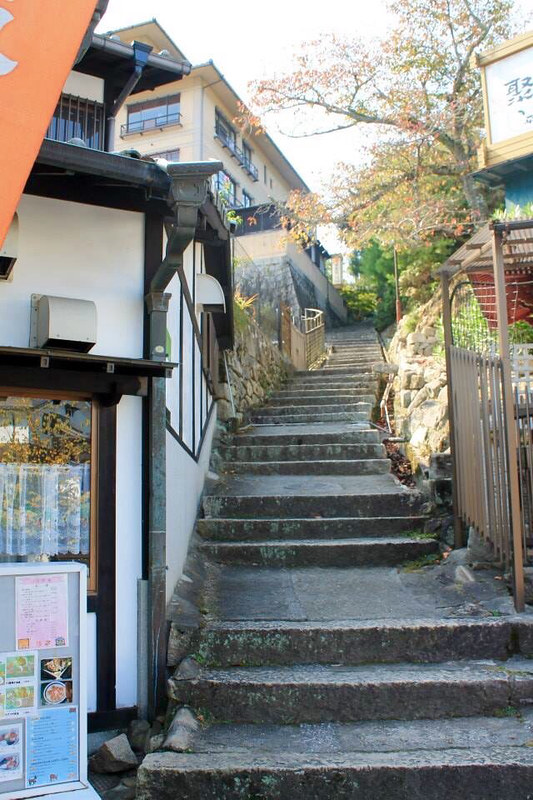
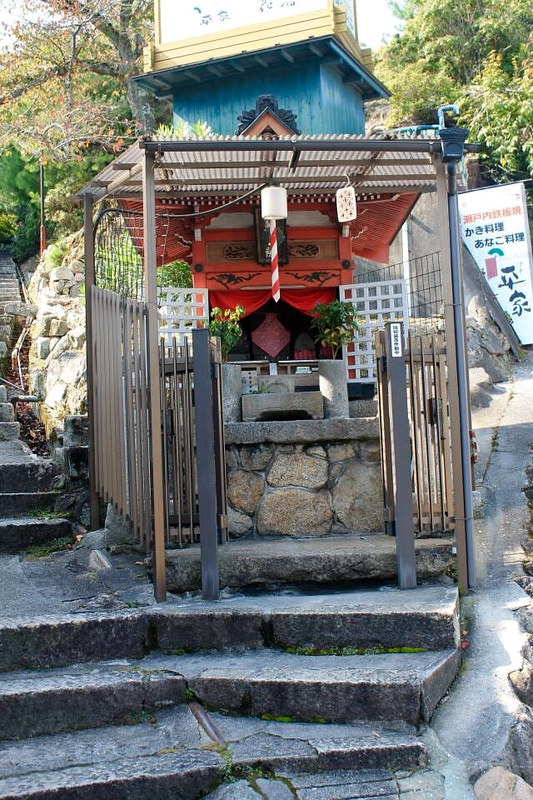
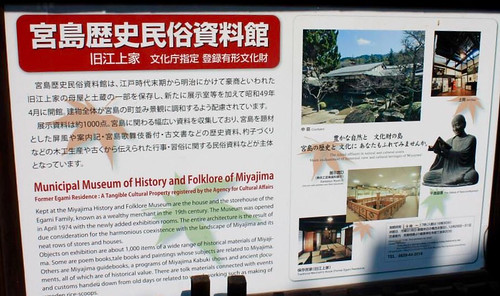
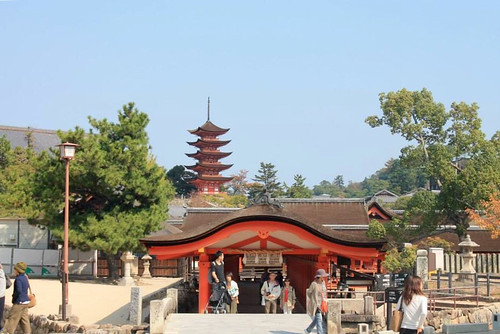
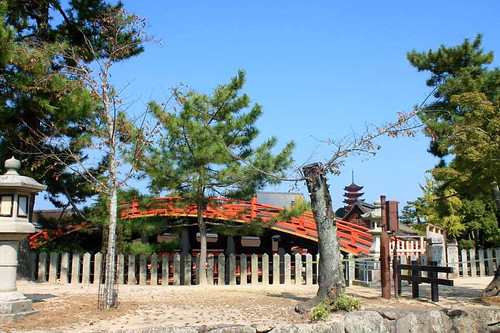
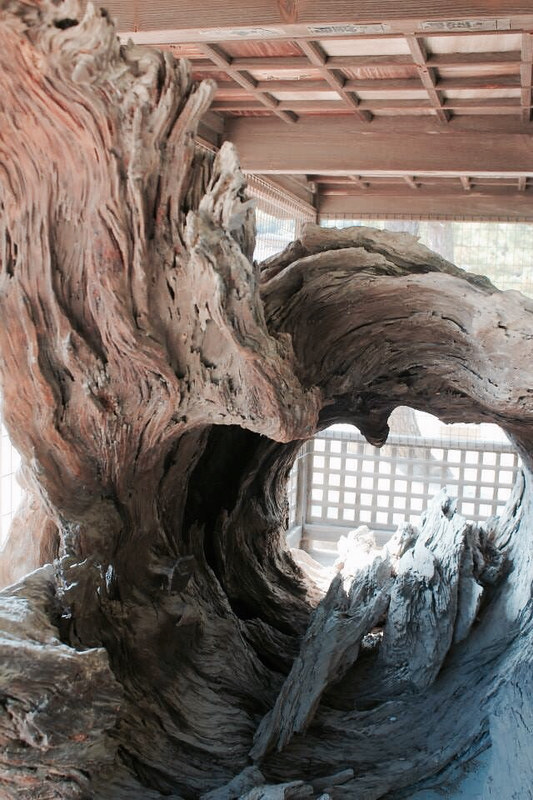
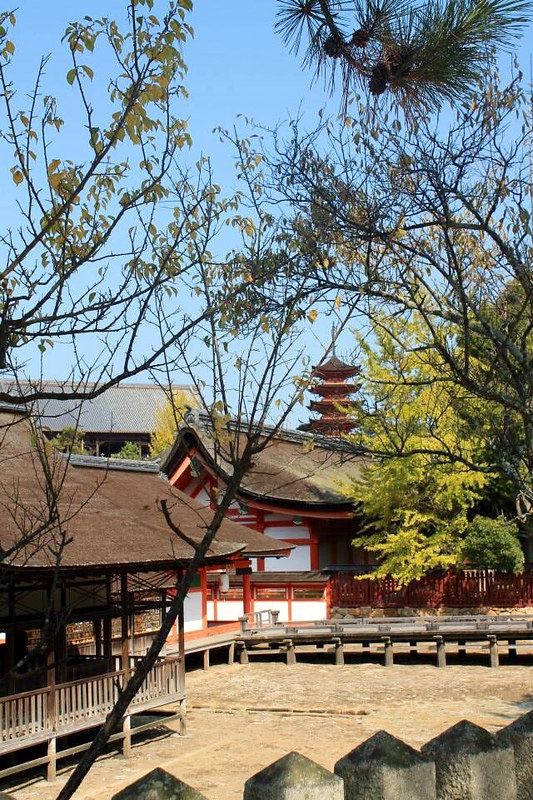
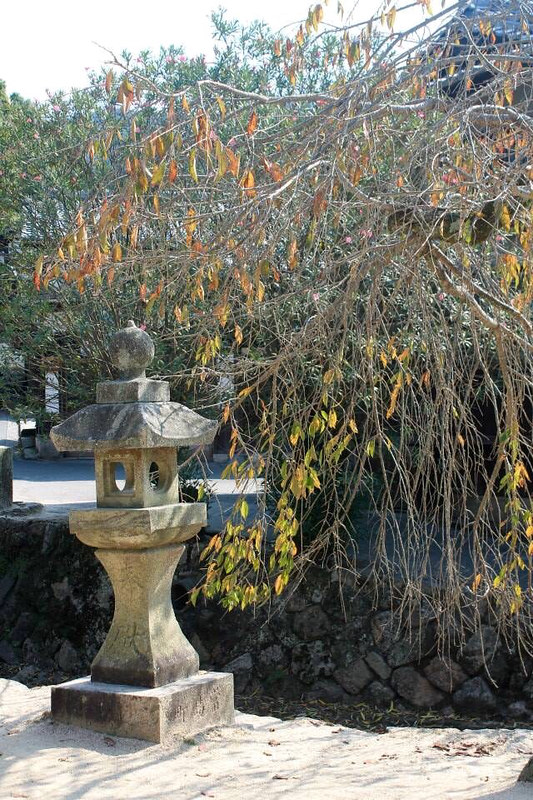
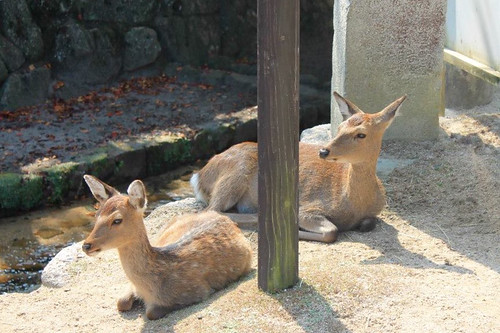
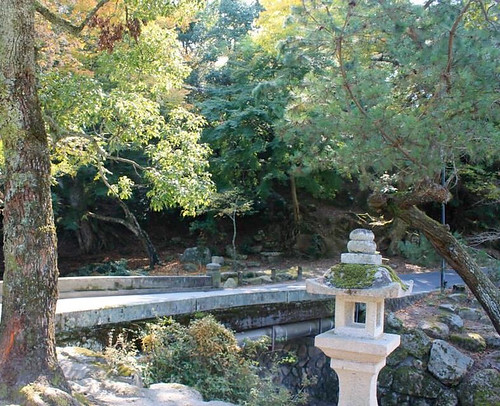
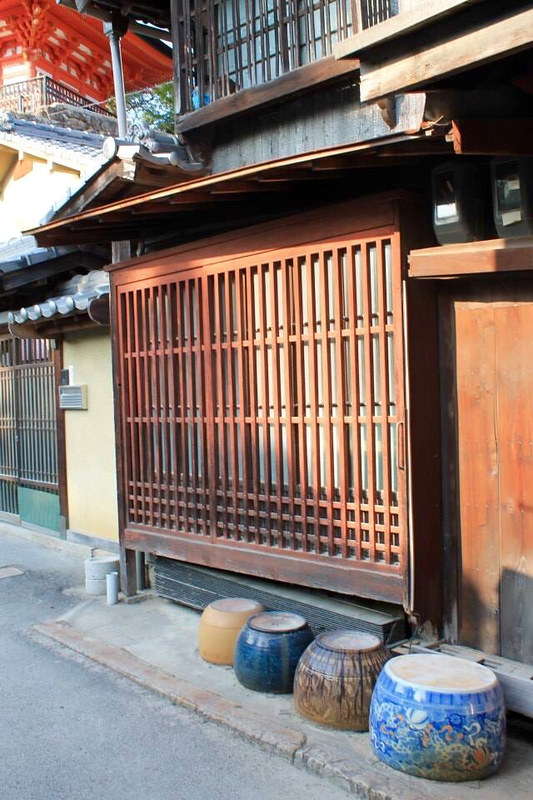

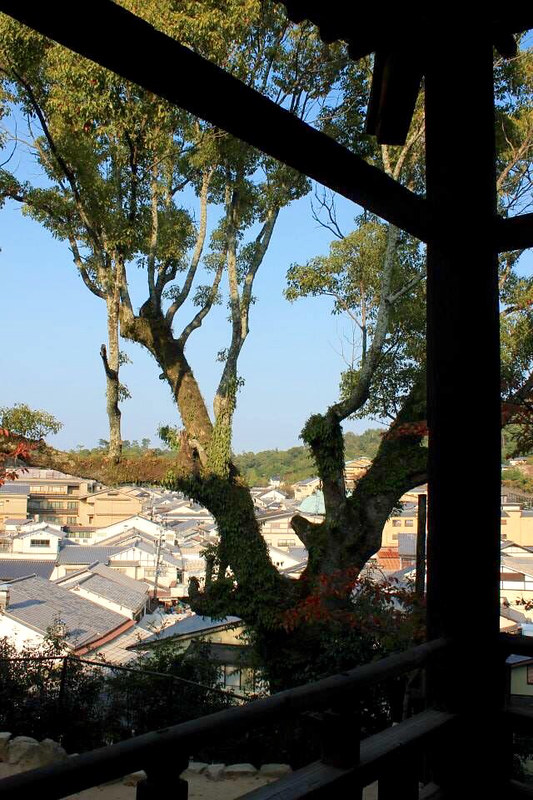
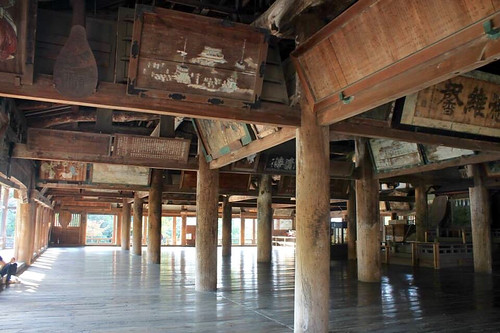
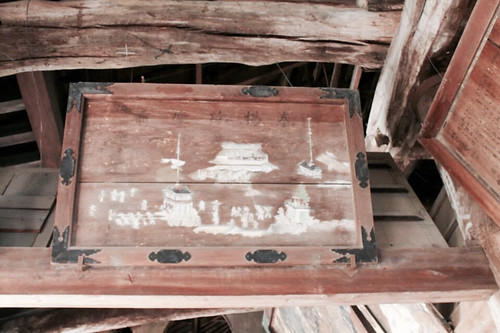
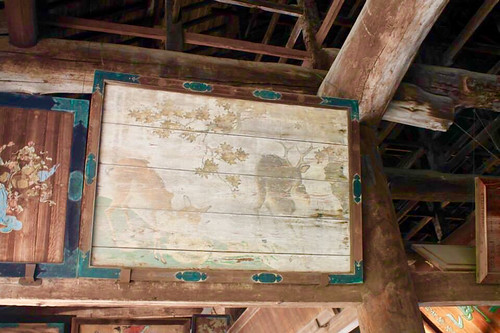

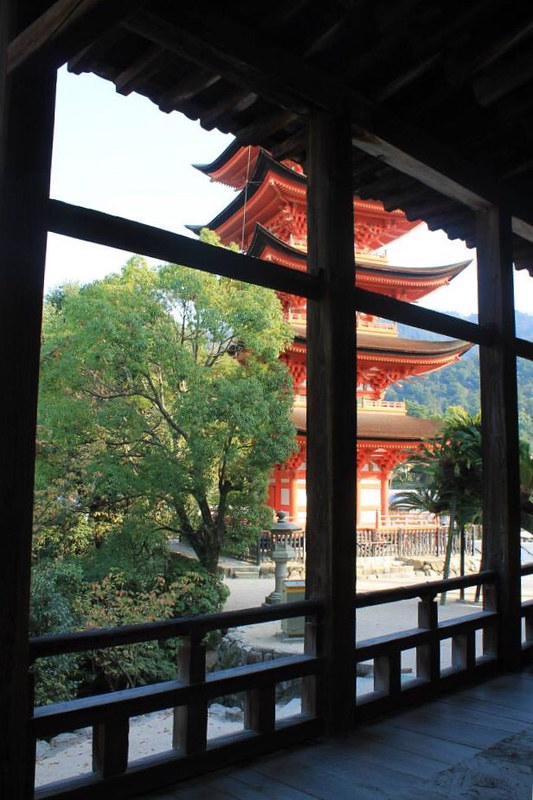
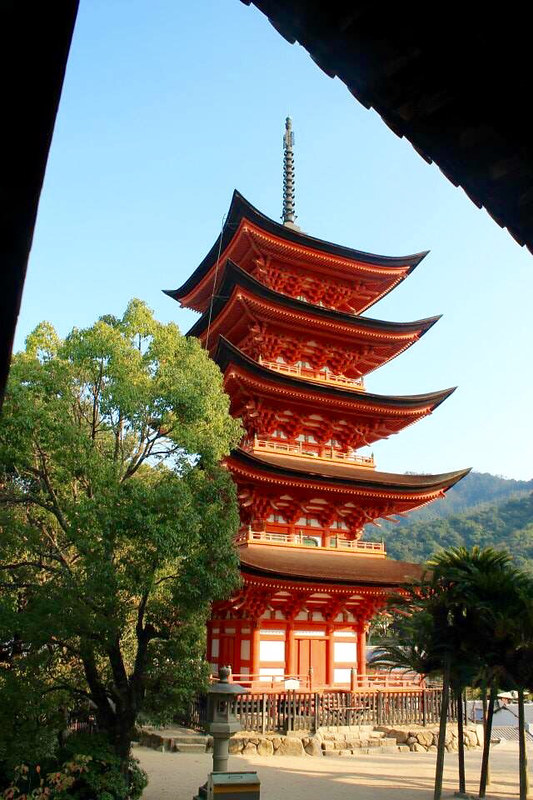
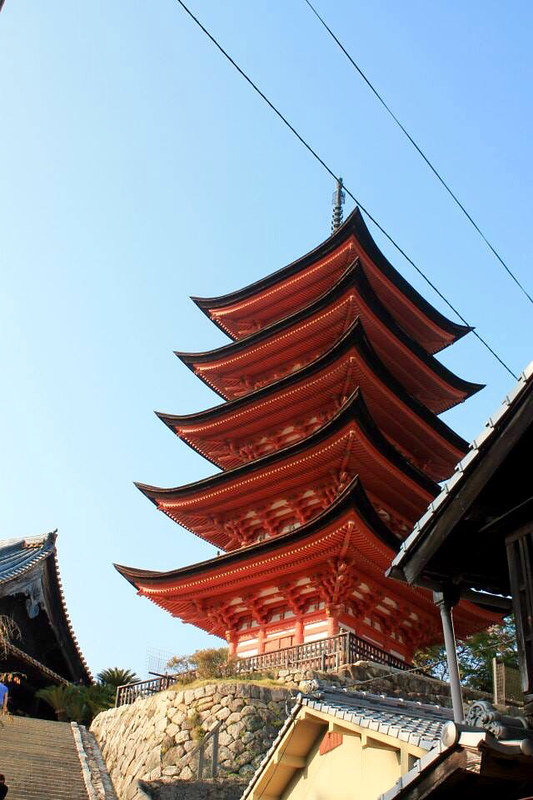

Keine Kommentare:
Kommentar veröffentlichen